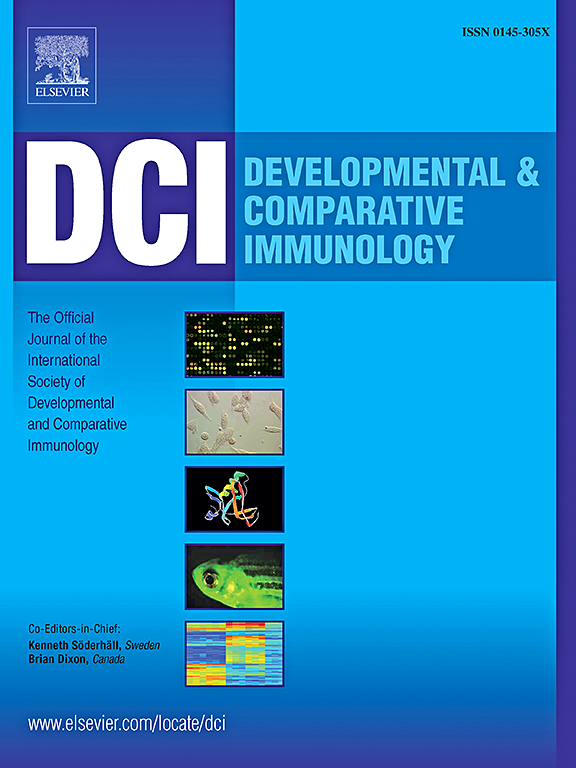Identification of two immunoglobulin light chain types and expression of immunoglobulin diversity in Chinese giant salamander (Andrias davidianus)
IF 2.7
3区 农林科学
Q1 FISHERIES
引用次数: 0
Abstract
Lacking research on immunoglobulins in the Chinese giant salamanders (Andrias davidianus) has left their populations vulnerable to pathogen infections, contributing to a sharp decline in their numbers. In this study, we employed the rapid amplification of cDNA ends (RACE) technique along with paired-end 300 bp read length (PE300) sequencing. This approach was used to construct a DNA library, which enabled us to investigate the diversity of immunoglobulin gene expression. Through this approach, we identified structural features of immunoglobulin light chains. Our results revealed the presence of Igλ and Igσ. Similar to other vertebrates, the immunoglobulin light chains of Chinese giant salamanders are composed of variable (V) and constant (C) domains connected by recombination activating gene (RAG) mediated V-J (joining) recombination. This canonical gene organization allows combinatorial diversity through rearrangement of multiple V and J gene segments. The IgLC features FPPS and FYP motifs, showing high similarity to both mammalian IgLC sequences and the IgLC of the Chinese Alligator (Alligator sinensis). The IgSC, characterized by SSYL structures, showed strong homology with fish and amphibian IgSC sequences, notably the axolotl (Ambystoma mexicanum) IgSC. Both the IgLV and IgSV sequences exhibit a YYCXX fold in the last five residues of framework region 3 (FR3). FR3 is a critical framework region within the V domain that anchors the antigen binding complementarity determining regions. Notably, the FPPS/FYP motifs in Igλ and SSYL motifs in Igσ exhibited evolutionary conservation patterns consistent with those in other vertebrates. In terms of gene expression diversity, the IgH is composed of 7 IgHV, 7 IgHD, and 6 IgHJ subgroups, while the Igλ consists of 10 IgLV and 7 IgLJ subgroups, and the Igσ comprises 5 IgSV and 7 IgSJ subgroups. Dominant IgH combinations are IgHV4-IgHD3-IgHJ4 and IgHV4-IgHD2-IgHJ4. The Igλ shows high usage of IgLV8, IgLV3, IgLJ7, and IgLJ3, while the Igσ is predominantly characterized by IgSV3-IgSJ3. Notably, Cys utilization in the complementarity determining region 3 (CDR3) region was extremely low, suggesting that gene conversion plays a significant role in immune adaptation. This research enriches the immune genetic map of the Chinese giant salamanders and enhances our understanding of immunoglobulin evolution in tetrapods.
求助全文
约1分钟内获得全文
求助全文
来源期刊
CiteScore
6.20
自引率
6.90%
发文量
206
审稿时长
49 days
期刊介绍:
Developmental and Comparative Immunology (DCI) is an international journal that publishes articles describing original research in all areas of immunology, including comparative aspects of immunity and the evolution and development of the immune system. Manuscripts describing studies of immune systems in both vertebrates and invertebrates are welcome. All levels of immunological investigations are appropriate: organismal, cellular, biochemical and molecular genetics, extending to such fields as aging of the immune system, interaction between the immune and neuroendocrine system and intestinal immunity.

 求助内容:
求助内容: 应助结果提醒方式:
应助结果提醒方式:


